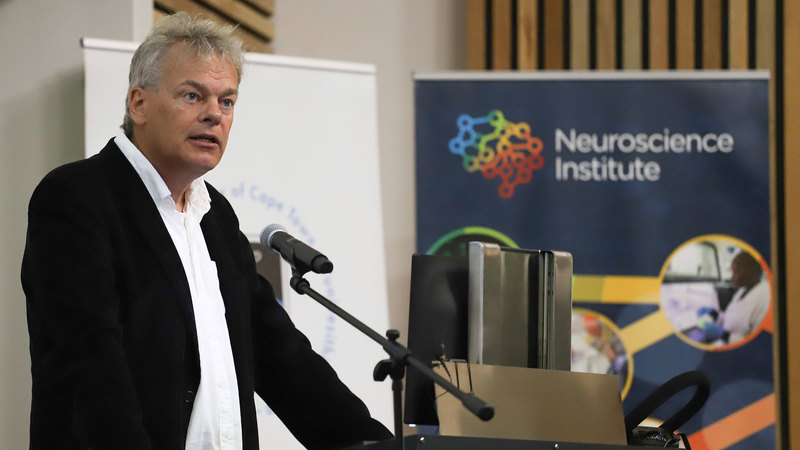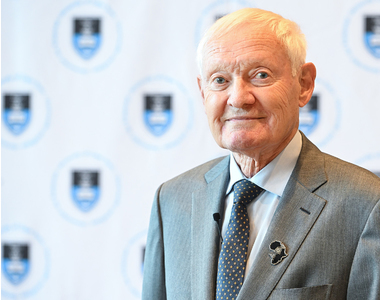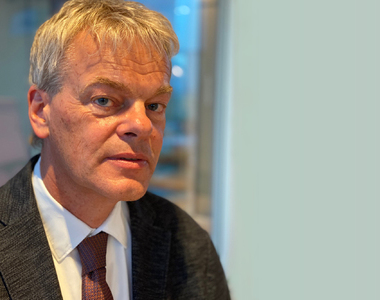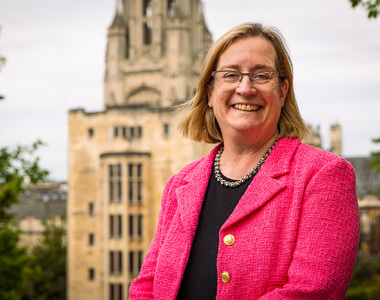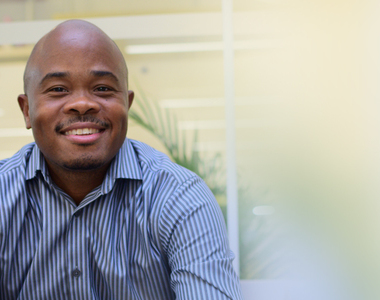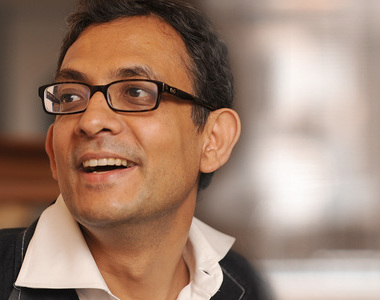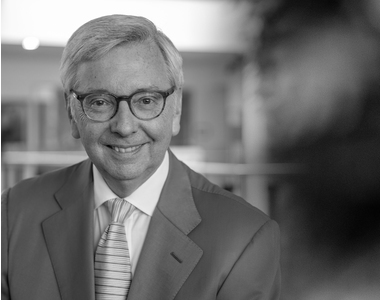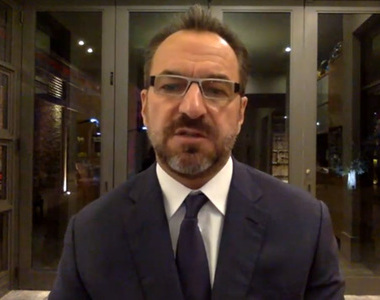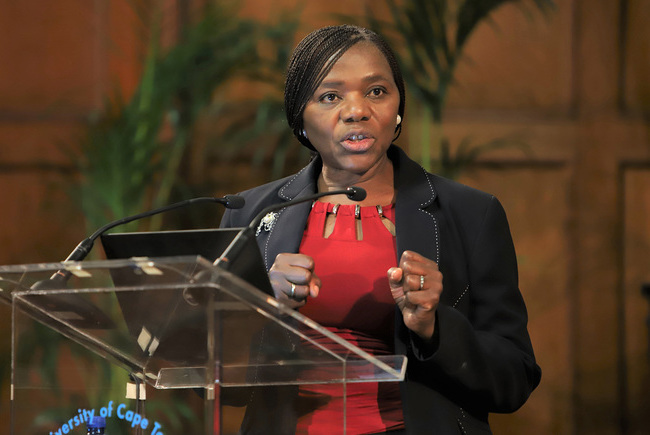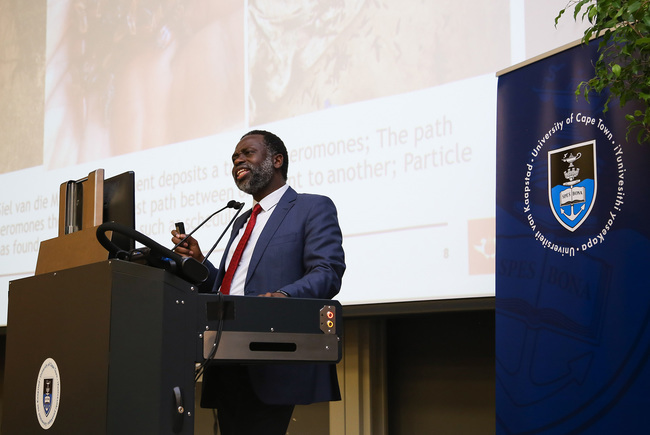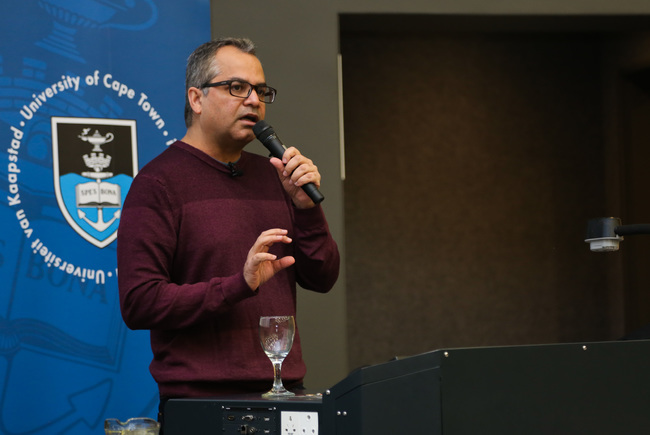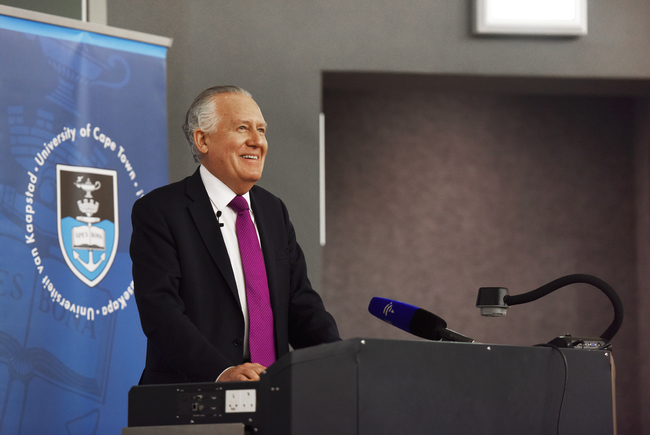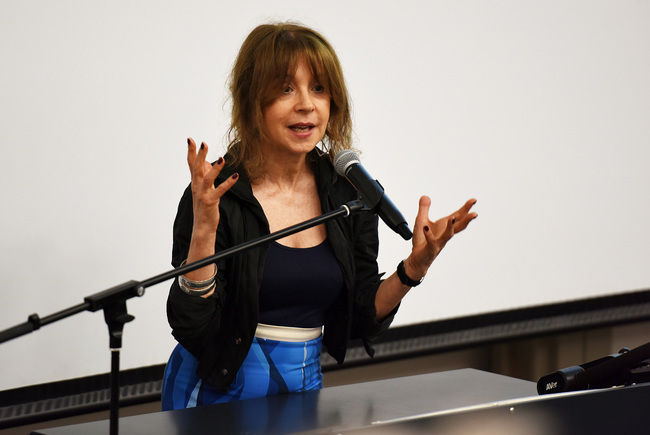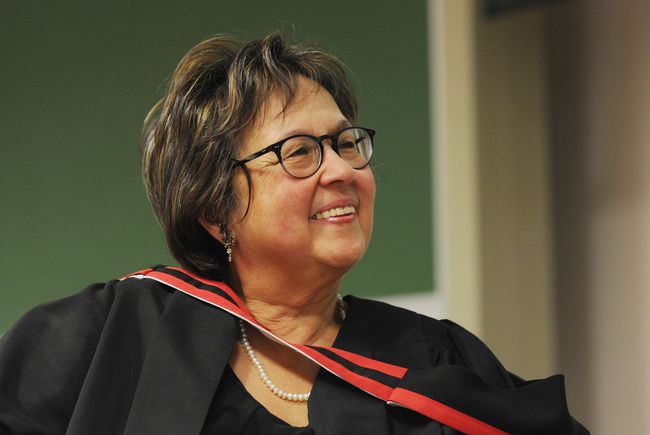VC Open Lecture explores parts of the body’s most complex organ
24 March 2023 | Story Niémah Davids. Photos Je’nine May. Director Ruairi Abrahams & Nico Badenhuizen. Videography & Video Edit Ruairi Abrahams. Read time 6 min.Fundamental elements of the body’s most complex and fascinating organ – the human brain – were placed under the microscope during the second University of Cape Town’s (UCT) Vice-Chancellor’s (VC) Open Lecture for 2023.
Titled: “Neural computation of space and time”, the lecture was presented by Professor Edvard Moser, a professor in neuroscience and one of the scientific directors of the Kavli Institute for Systems Neuroscience at the Norwegian University of Science and Technology in Trondheim. The in-person component of the hybrid event was held at UCT’s Neuroscience Institute and was hosted by interim VC Emeritus Professor Daya Reddy on Wednesday, 22 March.
The VC Open Lecture series was established to enable anyone in the community, whether they are connected to UCT or not, to have the benefit of hearing first-hand from academics, researchers and innovators from South Africa, but particularly from those around the world, who have distinguished themselves in their area of expertise.
The brain
Professor Moser’s work focuses on investigating neural network coding in the cortex with an emphasis on space, time and memory. He is currently unravelling how neural microcircuits for space and time are organised as interactions between large numbers of diverse neurons with known functional identity. Space and time, he explained, helps to inform researchers about the brain’s internal constraints on experience and those intrinsic dynamics not determined by sensory inputs.
“One of the reasons for being interested in space and time and for dedicating this lecture to that topic is [because] these are brain functions that are present before an experience.”
He noted that the brain consists of 80–100 billion neurons, each receiving connections from 10 000 other cells. Understanding just how activity in this network underlies subjective experience and behaviour is tricky and constantly evolving.
“One of the reasons for being interested in space and time and for dedicating this lecture to that topic is [because] these are brain functions that are present before an experience. It’s very hard to imagine any experience without space and time,” he said.
Positioning system
The brain’s positioning system includes the hippocampus – a region of the brain associated with learning and memory – as well as the entorhinal cortex, the gateway for information entering and leaving the hippocampus that acts as a network hub for memory, navigation and perception.
“People who have issues or who have damage [to] the hippocampus have severe problems with forming memories. They also can’t find their way and have problems with putting events into sequence,” he said.
However, because the brain is so inaccessible, studying it is a complex exercise. As a result, neuroscientists attempt to understand the organ and its mechanisms of navigation using other smaller and simpler systems, such as the brain of a rat. One such example, Moser said, was in 1971, when American-British neuroscientist John O’Keefe used microelectrodes to record and report the electoral activity in the hippocampus of a freely moving rat. His goal was to search for the fundamentals of memory.
Cell discoveries
Instead, O’Keefe discovered place cells located in the rat’s hippocampus. Place cells are hippocampal cells that fire specifically when an animal is at a certain location. O’Keefe made this discovery after he placed a rat in a box filled with tiny pieces of chocolate – specifically for the purpose of this study – to ensure that it moved around freely and visited every corner of the box in an attempt to locate the chocolate. As scientists continued to study the human brain via rats, a decade later, Moser said, they also found head direction cells outside of the hippocampus. Head direction cells fire selectively when the rat points its head in a specific direction.
“[Again, scientists used] rats running around and each [head direction] cell was active only when the rat was heading in a certain direction. For example, a cell was only active when the rat was heading between 240 and 300 degrees. This map is for direction but obviously, the map of direction and the map of precision should probably speak [to each other]. They are connected through this other area – the entorhinal cortex,” he said.
Scientists’ unique discoveries continued into the new millennium. In 2005, they located grid cells in the brain’s medial entorhinal cortex – described as a kind of neuron that fires at regular intervals as an animal navigates an open area, allowing it to understand its position in space by storing and integrating information about location, distance and direction.
“Grid cells intermingle with border cells that fire specifically along local borders … and with object-vector cells that encode direction and distance to discrete objects,” Moser said. “Grid cells, head direction cells, place cells have since been reported in bats, monkeys and humans, suggesting they originated early in mammalian evolution.”
Early markers for Alzheimer’s disease
What are the implications of this research for neurological and neurodegenerative diseases like Alzheimer’s disease – the most common type of dementia that starts with mild memory loss and gradually progresses and leads to an inability to hold a conversation and respond to surroundings – as well as Parkinson’s disease?
The brain areas first affected by Alzheimer’s disease are the cortex and entorhinal cortex. And according to Moser, pathology and cell volume loss in the entorhinal cortex layer are early markers for Alzheimer’s disease.
“This [research] is what we have to do if we want to understand [these] diseases.”
“Everything I told you so thus far is what we call basic research. It’s about trying to find out how the normal brain works. This [research] is what we have to do if we want to understand [these] diseases. And that is not only [in the case of] neurological and neurodegenerative diseases like Alzheimer’s and Parkinson’s disease, but all psychiatric conditions depend on the very functions I told you about. Use space and time as a gateway into understanding cognition in the brain,” Moser said.
“Causes of Alzheimer’s disease are poorly understood [and] there is not yet a cure. But research on the cells that first express the disease may bring us there.”
Prof Edvard Moser also dedicated part of his lecture to the topic of time – encoding duration and organising the order of events.
 This work is licensed under a Creative Commons Attribution-NoDerivatives 4.0 International License.
This work is licensed under a Creative Commons Attribution-NoDerivatives 4.0 International License.
Please view the republishing articles page for more information.
The Vice-Chancellor’s Open Lecture Series
The Vice-Chancellor’s Open Lecture series was established to enable anyone in the community, whether they are connected to the university or not, to have the benefit of hearing first-hand from academics, researchers and innovators from South Africa, but particularly from those around the world, who have distinguished themselves in their areas of expertise.
Attendance to the lectures is free of charge as the series is one of the ways that UCT seeks to give back to the Cape Town community.
2024
2023
2022
2021
2020
2019
2018
2017
2016
2015
There was no lecture in 2015.


